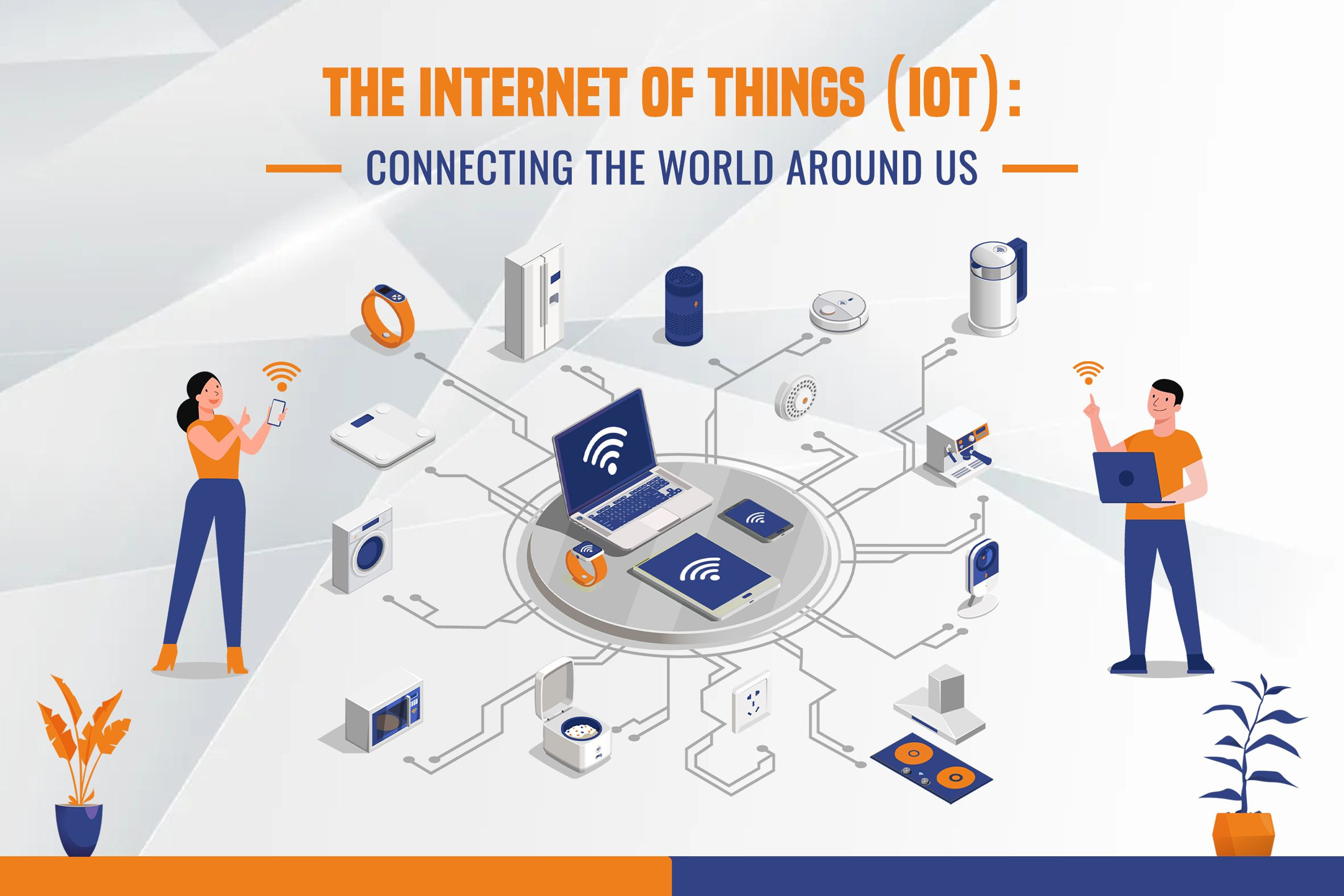
The Internet of Things (IoT): Connecting the World Around Us
The advent of the Internet of Things (IoT) has completely transformed our interactions with the world, paving the way for a remarkable shift in how we engage with our surroundings. It refers to the network of interconnected devices and objects that can communicate and exchange data with each other. This technology has transformed various industries, from healthcare and transportation to agriculture and manufacturing. In this article, we will explore the concept of the Internet of Things and its impact on connecting the world around us.
What is the Internet of Things (IoT) & How It’s Connecting Our World
The Internet of Things (IoT) encompasses a vast network of physical devices, vehicles, appliances, and other objects embedded with sensors, software, and network connectivity. These devices collect and exchange data, creating a seamless web of interconnectedness. By leveraging internet connectivity, the IoT enables devices to communicate, share information, and collaborate with each other.
The Evolution of IoT
The Internet of Things has come a long way since its inception. In the early days, it primarily involved connecting computers and servers to the internet. However, with advancements in technology and Technical Transformation, IoT has expanded to include everyday objects like smart home devices, wearables, and even vehicles. The ability of these devices to communicate and share data has opened up endless possibilities for innovation and convenience.
How Does IoT Work?
At the heart of the Internet of Things is connectivity. IoT devices rely on various communication protocols such as Wi-Fi, Bluetooth, Zigbee, and cellular networks to establish connections and transmit data. These devices use sensors to gather information from the environment or user interactions. The collected data is then processed and analyzed either locally or in the cloud. Insights derived from this data can be used to automate processes, improve efficiency, and enhance user experiences.
Applications of IoT
Smart Homes: Transforming Living Spaces
Smart homes have emerged as one of the leading domains benefiting from the widespread adoption of IoT technology. IoT devices such as smart thermostats, lighting systems, security cameras, and voice assistants have become increasingly popular. These devices can be controlled remotely through smartphones or voice commands, offering convenience and energy efficiency. For example, users can adjust the temperature of their homes or turn on lights before arriving, all through a mobile app.
Healthcare: Enhancing Patient Care
IoT has also made significant advancements in the healthcare industry. Connected devices like wearable fitness trackers, remote patient monitoring systems, and smart medical equipment enable healthcare professionals to monitor patients' health in real-time. This continuous data collection and analysis help in the early detection of potential health issues, personalized treatment plans, and improved patient outcomes.
Transportation: Smarter and Safer Mobility
The Internet of Things has revolutionized transportation systems, making them more efficient and safer. Smart traffic management systems use IoT sensors and data analytics to monitor traffic flow, optimize traffic signals, and provide real-time information to drivers. Additionally, IoT-enabled vehicles can communicate with each other and with infrastructure to avoid accidents, reduce congestion, and enhance overall road safety. With its plethora of benefits, it’s highly recommended to invest in Technical Training Courses offering IoT courses.
Agriculture: Precision Farming for Optimal Yield
IoT has also found its way into the agricultural sector, enabling precision farming techniques. Sensors embedded in the soil, crops, and farming equipment collect data on moisture levels, temperature, humidity, and crop health. This information, blend with data analytics, helps farmers make informed decisions regarding fertilization, irrigation, and pest control. By optimizing resource usage, IoT empowers farmers to maximize crop yield while minimizing environmental impact.
The Future of IoT
The Internet of Things is poised to reshape the world around us in the years to come. As technology continues to advance, we can expect even greater integration of IoT devices into our daily lives along with Technical Transformation. Smart cities will become more prevalent, with interconnected systems for transportation, energy management, and public services. The healthcare industry will see further innovations, such as remote surgeries assisted by IoT-enabled robotics. Additionally, industries like manufacturing and logistics will leverage IoT for automation, predictive maintenance, and supply chain optimization.
Final Words
The Internet of Things (IoT) has become an integral part of our modern world, connecting devices, objects, many Technical Training Programs, and people like never before. Its impact spans various sectors, enabling smarter homes, advancing healthcare, improving transportation systems, and optimizing agriculture practices. As IoT continues to evolve, we can expect a future where our surroundings are more interconnected, efficient, and sustainable. Embracing the potential of IoT opens up new opportunities for innovation, convenience, and improved quality of life.
